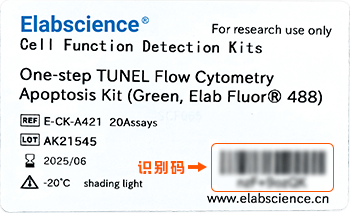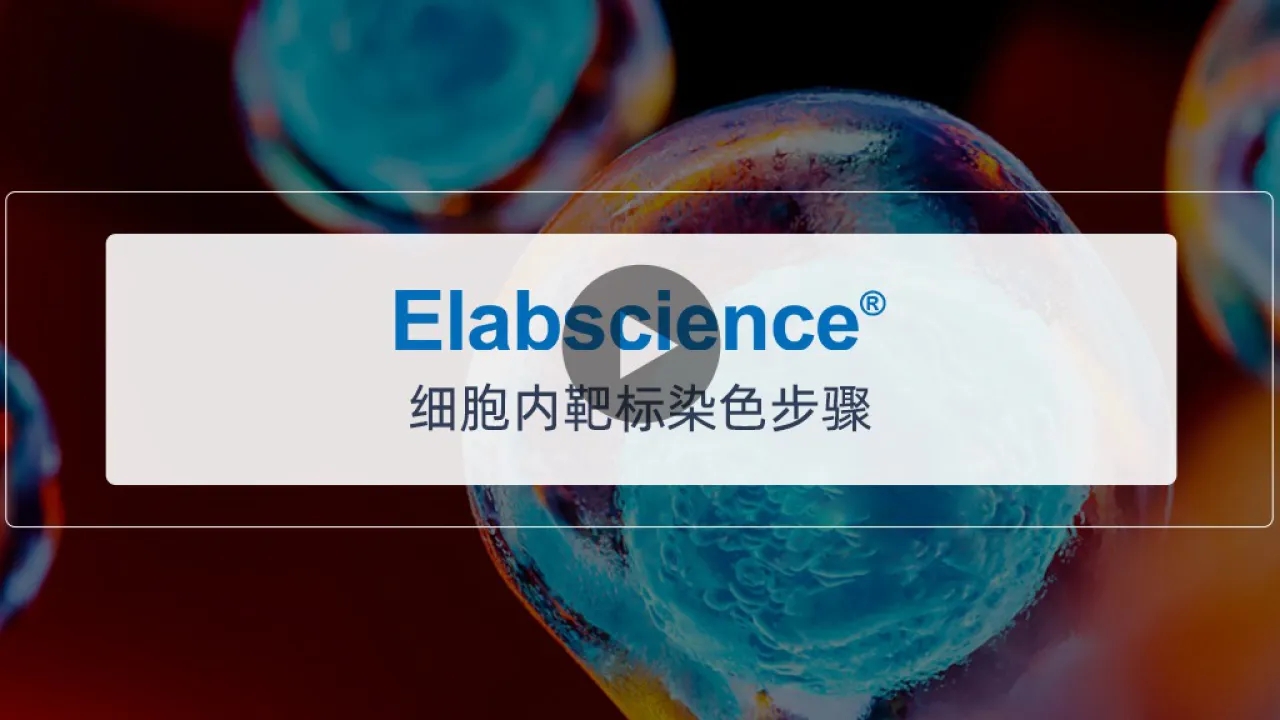PE Anti-Mouse CD86 Antibody[GL-1]
![PE Anti-Mouse CD86 Antibody[GL-1]](http://files.elabscience.cn/assets/images/loading.png)
Price:
- 应用性: FCM
- 亚型: Rat IgG2a, κ
- 宿主: Rat
| Alternate Names | Activation B7-2 antigen, Cd86, ETC-1, Early T-cell costimulatory molecule 1, T-lymphocyte activation antigen CD86 |
| Cellular Localization |
Membrane
|
| Clone No | |
| Isotype | Rat IgG2a, κ |
| Leadtime |
咨询
|
| Background |
CD86 is an 80 kD immunoglobulin superfamily member also known as B7-2, B70, and Ly-58. CD86 is expressed on activated B and T cells, macrophages, dendritic cells, and astrocytes. CD86, along with CD80, is a ligand of CD28 and CD152 (CTLA-4). CD86 is expressed earlier in the immune response than CD80. CD86 has also been shown to be involved in immunoglobulin class-switching and triggering of NK cell-mediated cytotoxicity. CD86 binds to CD28 to transduce co-stimulatory signals for T cell activation, proliferation, and cytokine production. CD86 can also bind to CD152, also known as CTLA-4, to deliver an inhibitory signal to T cells.
|
| Abbre | CD86 |
| Swissprot | |
| Host | Rat |
| Reactivity | Mouse |
| Clonality | Monoclonal |
| Isotype Control | |
| Applications | |
| Form | Liquid |
| Concentration | 5 μL/Test |
| Conjugation | PE |
| Conjugation Information | PE is designed to be excited by the Blue (488 nm), Green (532 nm) and Yellow-Green (561 nm) lasers and detected using an optical filter centered near 575 nm (e.g., a 585/42 nm bandpass filter). |
| Spectrum |  |
| Storage Buffer | Phosphate buffered solution, pH 7.2, containing 0.09% sodium azide. |
| Storage | This product can be stored at 2-8°C for 12 months. Please protected from prolonged exposure to light and do not freeze. |
| Expiration Date | 12个月 |
| Shipping |
冰袋 |
| Gene ID |
-
Self-Propelled Bacteria-Mediated In Situ Biosynthesis of MnS Nanoparticles for Remodeling Tumor Microenvironment to Amplify cGAS-STING Pathway for Antitumor Immunity
IF: 18.5 -
Static Topographical Cue Combined with Dynamic Fluid Stimulation Enhances the Macrophage Extracellular Vesicle Yield and Therapeutic Potential for Bone Defects
IF: 15.8 -
Regulating the Tumor Microbiome through Near-Infrared-III Light-Excited Photosynthesis
IF: 15.8 -
A cancer vaccine factory based on autophagy and efferocytosis to enhance tumor immunotherapy
IF: 13.2 -
Optically controllable nanoregulators enable tumor-specific pro-ferroptosis lipometabolic reprogramming for in-situ adjuvant-free vaccination
IF: 12.8 -
Harnessing Prazosin for Tumors: Liposome Hybrid Nanovesicles Activate Tumor Immunotherapy via Autophagy Inhibition
IF: 12.8 -
Resibufogenin protects against atherosclerosis in ApoE-/- mice through blocking NLRP3 inflammasome assembly
IF: 11.4 -
Metal-organic framework nanoparticles activate cGAS-STING pathway to improve radiotherapy sensitivity
IF: 10.6 -
Homologous magnetic targeted immune vesicles for amplifying immunotherapy via ferroptosis activation augmented photodynamic therapy against glioblastoma
IF: 10.5 -
Multi-omics analysis reveals immunosuppression in oesophageal squamous cell carcinoma induced by creatine accumulation and HK3 deficiency
IF: 10.4
| E-CK-A105 | 10×ACK Lysis Buffer | 500 mL , 200 mL , 100 mL |
| E-CK-A107 | Cell Staining Buffer | 500 mL , 200 mL , 100 mL |
Q1:流式细胞仪分选Raw264.7 M1型和M2型细胞的标志物是什么?分选之后还能培养吗?
大多数做小鼠巨噬细胞分选会用F4/80、CD11b确定总巨噬细胞,然后用CD86测M1型,CD206测M2型,以上只作为一个参考。如果流式分选得到的细胞还需进行培养,建议不要使用CD206,因为CD206需要进行固定破膜操作,细胞会全部死亡。此外,M1和M2的标志物表达量不高,很难分选。
Q2:流式检测小鼠巨噬细胞,要检测M1、M2型巨噬细胞,有哪些推荐?
大多数老师做小鼠巨噬细胞会用F4/80、CD11b确定总巨噬细胞,然后用CD86测M1型,CD206测M2型,但是最终客户要检测哪些指标还是需要客户根据文献以及自己的实验需求自己来决定的,以上可以作为一个参考。
Q3:有IHC实验应用性的抗体,20μl可以做几张片子?
首先客户需要根据抗体说明书&预实验结果来预估一下抗体的使用量,不同的样本,因抗原的表达量不同,抗体稀释比会有差异的。
例如:某个抗体的IHC实验,预实验确认按稀释比1:50计算,通常情况下,一张切片需要加入稀释后的抗体100μl,也就是一张切片需要2μl抗体,20μl大概可以做10张切片。
Q4:文献查的分子量与说明书上的有异议,同一指标为何有几种分子量?
因为同一蛋白在不同的种类的细胞中可能由于转录后有不同的剪切体、翻译后有不同的修饰方式,比如糖基化、泛素化等,分子量并不是唯一不变的,另外,蛋白官网Uniprot上可以查找到蛋白不同的亚型分子量大小是有差异的。所以文献上查到的分子量与说明书上抗体分子量有些会有一定的差异。(可以多查一些文献参考确认目的蛋白在目标样本中的分子量)。
Q5:抗体是否可以使用在说明书上没有反应性和应用上?
一般抗体的说明书都会列出该抗体经验证适用于何种实验的类型(如: WB、IHC、IP、IF等), 如果抗体说明书没有提及的应用类型,并不意味着该抗体不适用于此种分析应用类型,可能是我们这边没有做相应的验证,或者验证的样本效果不太好,一般如果没有的应用或者反应性不推荐客户使用,请尽量根据说明书列出的已验证的类型来选择适合你实验的抗体。
如果客户想尝试,可以提前咨询技术支持或者购买小规格进行相应实验尝试,但没有做出预期的结果,一般无法提供产品的更换或者退款。
Q6:抗体怎么选阳性对照?
阳性对照的使用是一个实验中确定抗体及检测系统是否正常工作的依据,也是确定待测标本中是否存在待测蛋白的一个依据!尤其是检测的标本不确定是否有待测蛋白表达时。因此当实验没有阳性结果出现时,最好选择实验合适的阳性对照,大部分说明书上都有推荐的阳性对照;或者根据说明书上的SwissProt 或 Omnigene 数据库查找,这些数据库经常会列出该蛋白在哪些组织里面高表达,这些样本可以作为合适的阳性对照。
Q7:如果抗体的Reactivity中没有包含我实验样本的物种,是否提供售后?
抗体说明书中提到的物种是确认可以做的,但不能保证抗体可用于未经验证的物种, 即使序列比对同源性高。抗体是否能识别其它物种样本内的蛋白涉及许多因素,我们无法做出预估。如果没有其它的选择,您必须考虑购买抗体用于未验证的物种,我们建议您将免疫原序列与您的目的蛋白序列进行比对,同源性高的话成功的可能性会比较大。如果您购买的抗体是用于未经验证的物种或者实验应用,一般无法提供产品的更换或者退款。
Q8:一抗的使用浓度是多少?
我们的抗体是浓缩型的,抗体最终使用浓度除了跟抗体本身浓度有关,也跟样本中目的蛋白的丰度有关,所以我们说明书提供的抗体推荐稀释比是一个范围,最终稀释比例是需要您通过预实验确定的,当然您也可以咨询我们的技术团队给您推荐一个合适的稀释比来摸索实验条件。
Q9:IHC实验,想知道抗原修复条件是什么?是用EDTA还是枸橼酸钾?
修复条件一般为高温高压或者微波加热修复。
例如:抗原修复(高压法) :压力锅中加入足以淹没切片的 10 mmol/ml 的枸橼酸盐缓冲液(pH 6.0) (配制:将抗原修复液溶于相应体积 ddH2O中,混匀),加热至沸腾,切片置耐热塑料切片架上,放入锅中,盖好锅盖,扣上压力阀,继续加热,设置保压 4 min,时间到后打开放气阀放气,压力归零后开锅盖将内锅取出放置室温冷却,待溶液冷却至室温后取出切片(约30 min)。
抗原修复(微波法) :烧杯中加入足以淹没切片的 10 mmol/ml 的枸橼酸盐缓冲液(pH 6.0) (配制:将抗原修复液溶于相应体积 ddH2O中,混匀),加热至沸腾,切片置耐热塑料切片架上,放入烧杯中,中小火加热30min后取出,放置室温冷却,待溶液冷却至室温后取出切片(约30 min)。
IHC修复液的选择建议参考抗体使用说明书,或者参考以下方案:人体样本,优先推荐使用pH9.0的EDTA修复液(临床样本);大/小鼠样本,优先推荐使用pH6.0的枸橼酸修复液(科研样本)。
Q10:IHC在数据表上是什么意思?是冷冻切片吗?与IHC-F区别?
IHC是免疫组化实验,使用的切片一般包含有IHC-P(石蜡切片)和IHC-F(冰冻切片)两种。

暂无文件,请在搜索框输入识别码查询相关文件

| 名称 | 状态 | 有效期至 | 操作 | |
|---|---|---|---|---|
| {{item.文件名}} | {{item.status_str}} | {{item.timestamp_str}} | 点击查看 点击预览 |
*注:请在有效期内下载相关文件,过期后页面内将不提供文件下载及预览!











